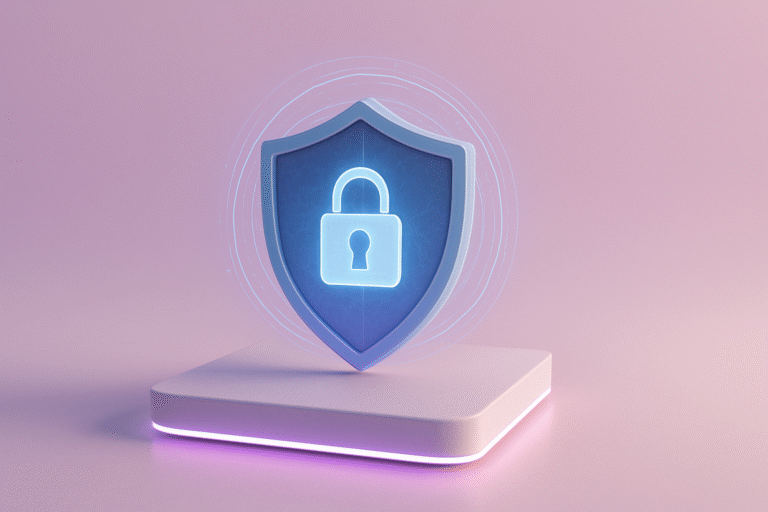The use of our digital identity is increasingly present in our daily activities. At the same time, users are also becoming increasingly concerned about the management of their private data when it is completely at the mercy of the level of security and privacy of the entities that store it.
For some time now, the limited control we have over our personal data has been the subject of debate, especially in view of the evident lack of security and the high degree of vulnerability in Web 2.0 and in the centralized databases managed by the different corporations that, in most cases, cede their management to external companies.
But what exactly is digital identity and why is its self-management so important? In this article, we explore in depth the concept of digital identity, its importance, and the challenges and opportunities it presents.
What is digital identity?
When we talk about digital identity, we refer to the data that identifies a person, organization or device in the digital environment. This data can include a myriad of personal information such as name, email, phone number and passwords, as well as social network profiles or browsing history, among others.
Therefore, we could say that digital identity is the way in which one presents oneself in the digital world, allowing us to interact and perform operations on the Internet in a secure way.
For this reason, it is essential to properly manage our digital identity to protect ourselves, as well as to ensure reliable access to digital services.
Digital identity management
Digital identity management is used to verify the authenticity of a user, i.e. to confirm that a user is who he or she claims to be. Therefore, this process involves identifying and authenticating an individual, through a digital representation of his or her identity.
Normally, this management has depended on a centralized authority that validates the user’s identity; but this way of managing people’s identity is increasingly affected by external attackers, who not only breach the security of the system, but also manage to access and steal user data.
Current identity management weaknesses
Current identity management systems face several challenges:
- Single point of failure: Most systems rely on a centralized entity. If this entity is compromised or ceases to function, users must go through a recovery process.
- Ownership and control issues: Users do not have full control over their profiles and the management of their personal data.
- Duplication: Users must create different accounts for each service or platform they want to access in order to identify themselves.
- Impersonated or false identities: Current services allow the creation of multiple identities, which facilitates spam and impersonation. It also allows minors to easily breach the system and access services intended for adults.
Paradigm shift to Self-Sovereign Identity (SSI)
What is self-sovereign identity?
Self-sovereign identity, also known as SSI, allows individuals and organizations to have full control over their data and, thus, be able to manage their own identity autonomously.
In this way, through SSI it is possible to prove the user’s identity without having to lose control over their data in those operations that require this verification.
How does SSI work?
From a functional perspective, SSI allows, for example, governments to issue digital identity documents to their citizens in the form of verifiable credentials. These credentials can be of various kinds, such as a passport, certificate or diploma, which are stored and managed through digital wallets and can be verified by anyone with whom they are shared.
From a technical perspective, SSI requires several concepts (such as trust registries, keys, authentication protocols, etc.) that can be combined in different ways. As a result, there are different ways to implement SSI, which makes a basic understanding of the technologies vital.
Therefore, the following basic concepts in the use of SSI are outlined below:
- Trusted registries: these are distributed databases that securely store information related to digital identity. These registries can be blockchain or any other form of DLT. Their main function is to provide a trusted and transparent environment where digital identities can be registered and verified.
- Cryptographic keys: These are fundamental to the security of SSI. They are used to create digital signatures that authenticate the user’s identity and ensure the integrity of shared information. There are two main types of cryptographic keys in this context:
- Public keys: They are shared openly and are used to verify the digital signatures created by the corresponding private keys.
- Private keys: They are kept secret and are used to create digital signatures. The security of these keys is crucial for the protection of the user’s digital identity.
- Decentralized identifiers (DIDs): These are a new form of digital identifiers that do not depend on a centralized authority. DIDs are created and controlled autonomously by the users themselves. Each DID is associated with a set of documents containing information necessary for verification, such as public keys.
- Verifiable credentials (VCs): These are digital documents issued by a trusted entity that contain assertions about an individual.
- Digital wallets: Digital wallets are applications that store and manage users’ verifiable credentials.
These concepts act as pieces that can be combined in different ways depending on the needs of the use case.
Example of the use of SSI
Suppose a person wants to prove that he/she has a university degree without disclosing additional information. The verification process would be as follows:
- The university issues a verifiable credential that is stored in the user’s digital wallet.
- The user presents this credential to a company via a DID.
- The company verifies the authenticity of the credential by querying the trusted registry, ensuring that the public key matches the digital signature.
Conclusion
The traditional identity management model, characterized by its reliance on centralized authorities, has proven to be vulnerable to external attacks and loss of control by users over their own data. These challenges have highlighted the need for a more secure, user-controlled solution.
Self-sovereign identity emerges as an innovative solution that puts users back in control of their data, allowing them to manage their own identity autonomously. With SSI, digital credentials can be securely issued and verified, reducing the risk of fraud and improving the user experience in various digital interactions.

This paradigm shift not only improves user security and privacy, but also offers multiple advantages in terms of efficiency and convenience.
Resources:
[1] Introduction to Self-Sovereign Identity
[2] How Blockchain Is Used in Digital Identity Management
Want to learn more about decentralization? Don’t miss these resources!
- DLT: Distributed Ledger Technologies
- Exploring the blockchain technology
- Consensus algorithms in blockchain technology
At Block&Capital, specialists in tech recruitment, we strive to create an environment where growth and success are within everyone’s reach. If you’re ready to take your career to the next level, we encourage you to join us.
Last posts





